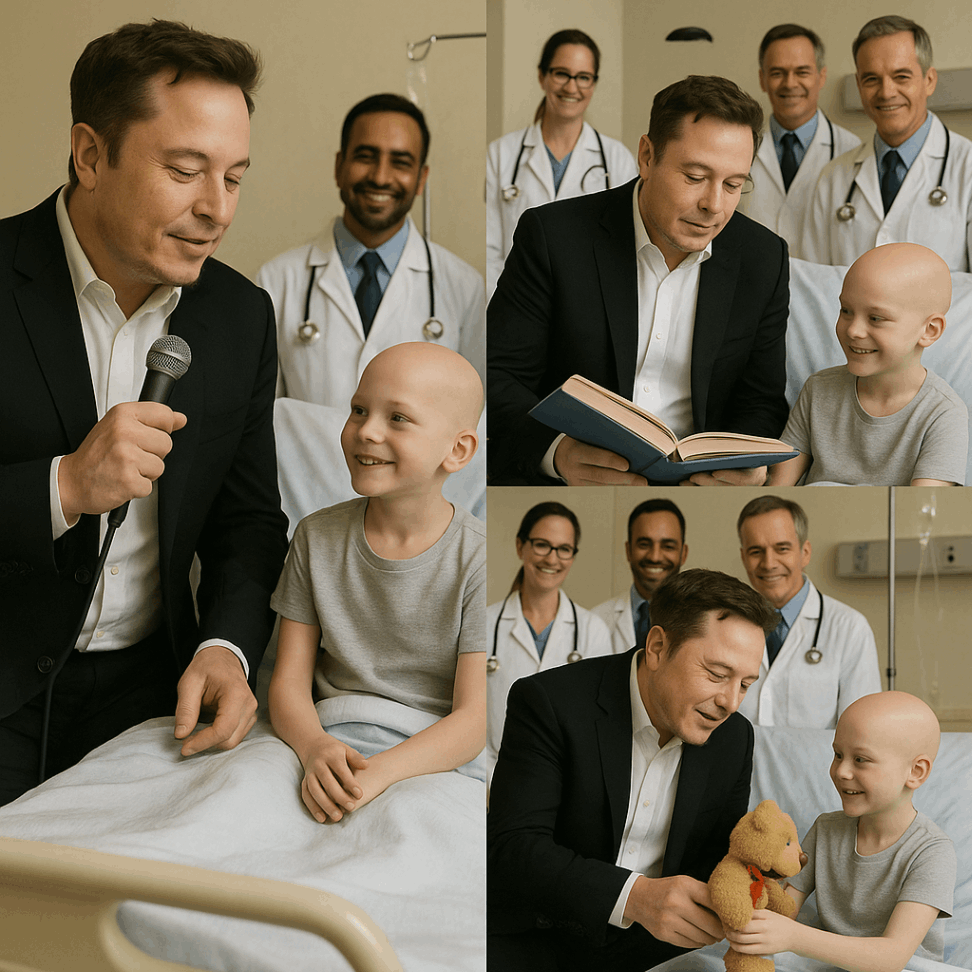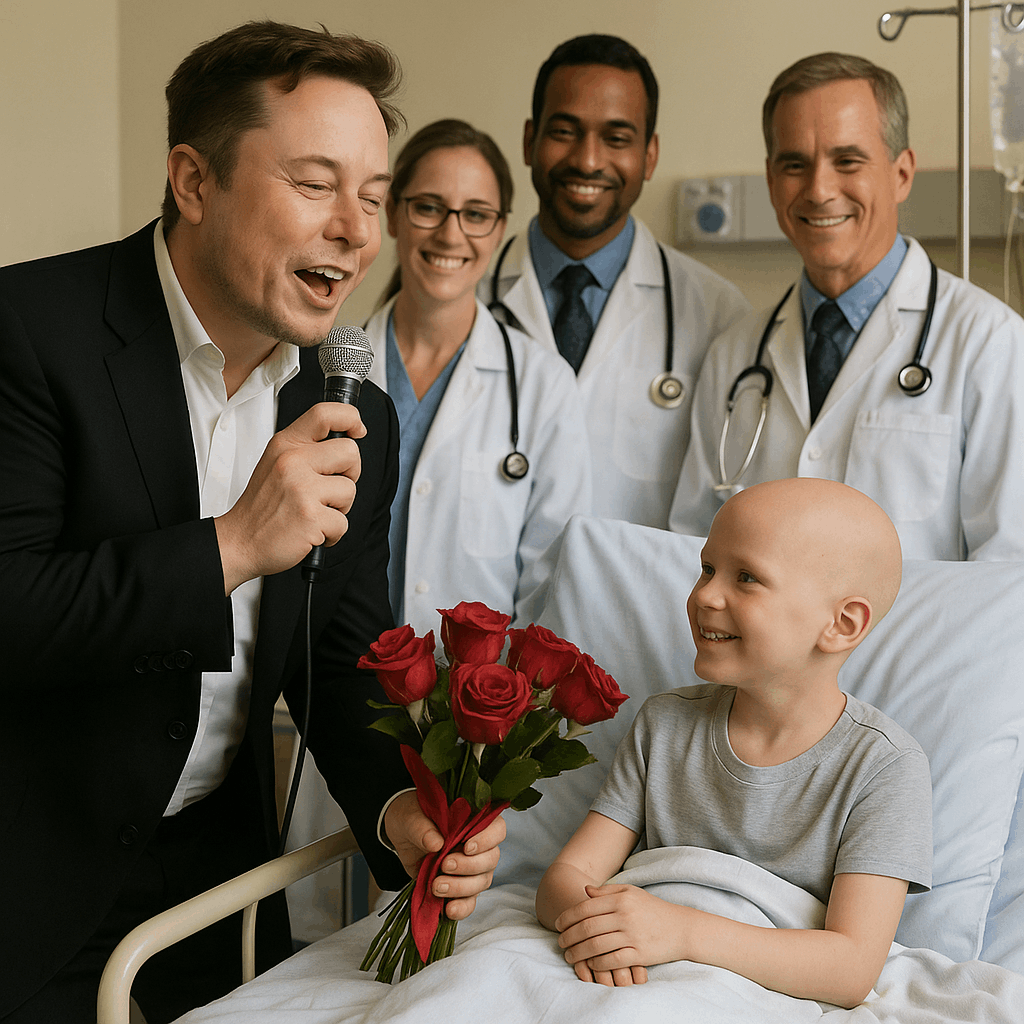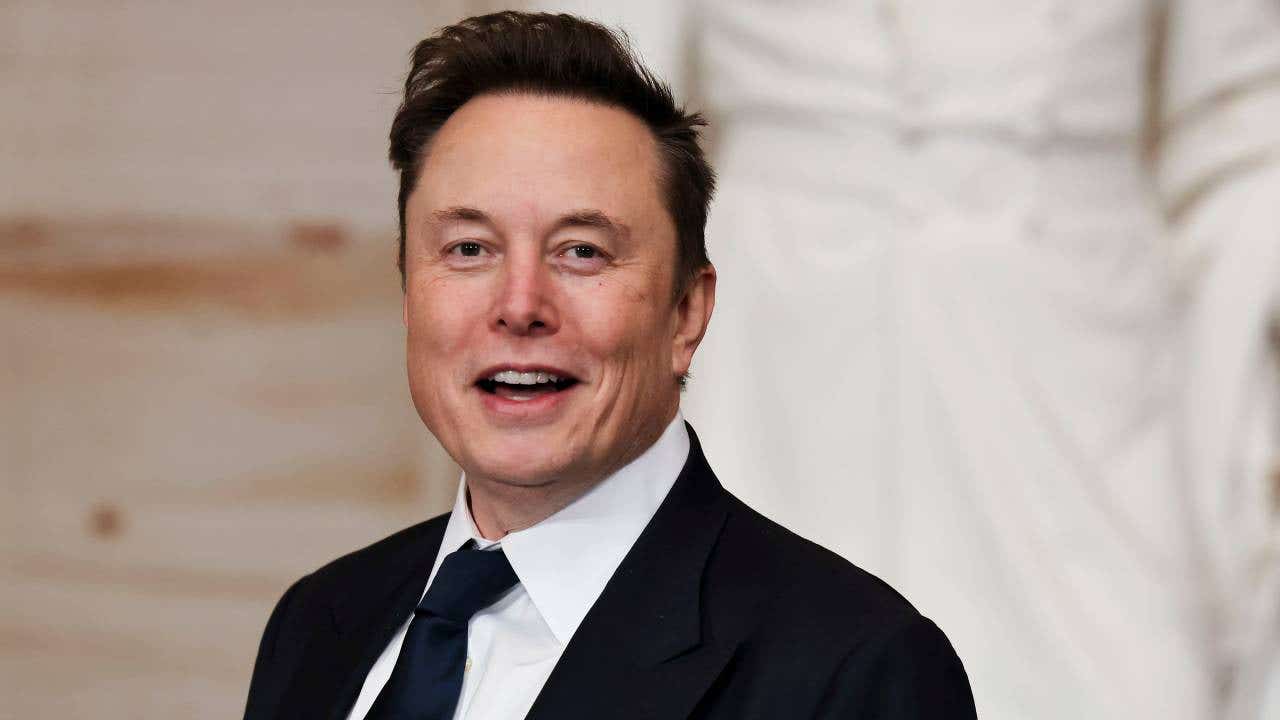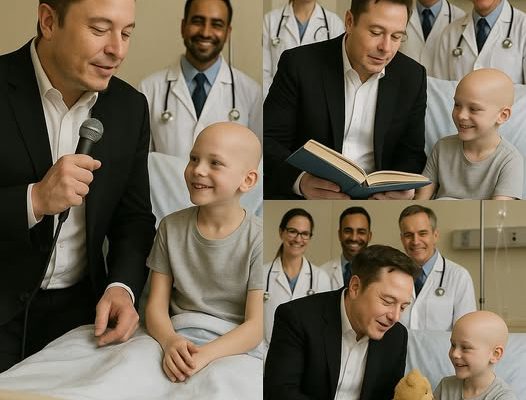The story begins with a simple message from twelve-year-old Emily—dying of a terminal brain tumor: “All I want is to hear my hero’s voice on the phone, just once.” The tiny hospital room fell silent, save for the steady beeping of the heart monitor and Emily’s shallow breaths. Everyone at the hospital thought this request was impossible. How could Elon Musk—the billionaire tech mogul who runs SpaceX and Tesla—find time to place a phone call for a little girl fighting for her life? But then, the unbelievable happened: Musk dropped everything, climbed into his private helicopter, and landed on the hospital lawn in the dead of night.
It was roughly 2:00 a.m. The hallway lights were dim, and most patients were asleep. Suddenly, a small entourage of medical staff and security guards escorted Musk to Emily’s room. Emily looked up, her wide eyes fixed on him as if she were dreaming. Musk—wearing a crisp white shirt and black blazer—stood beside her bed. His face was pale, eyes rimmed with exhaustion from nonstop work and the emotional toll of her situation. The head physician nodded to him: “You can do whatever you wish to help her, Mr. Musk.”
Without warning, Musk smiled gently, pulled a miniature microphone from his jacket pocket, and began singing Leonard Cohen’s “Hallelujah.” His voice trembled as though it carried both pain and hope. Emily, weakened by rounds of chemotherapy, managed a faint smile as the familiar melody washed over her. Nurses and doctors gathered silently behind, their eyes brimming with tears. In that moment, the billionaire was not a distant figure of unimaginable wealth—he was simply a man offering comfort to a dying child. The soft hospital lights highlighted their interaction, and the usually sterile room felt drenched in warmth.

When he finished the final verse, Musk carefully set the microphone aside and said, “You’ve endured too many promises from the world: expensive drugs, endless clinical trials, and still no cure. I’m here not just to sing for you, but to offer something that might change your tomorrow.” He gestured toward the medical team, who wheeled in a small, matte-black case. Inside lay a prototype Neuralink device—a piece of experimental neural interface technology never publicly released. It was designed to alleviate pain and potentially slow the tumor’s progression by directly stimulating specific brain pathways.
Musk’s voice broke as he continued: “This is our last, most advanced beta unit. I want you to have it.” Emily’s eyes widened; tears of disbelief rolled down her cheeks. The medical staff exchanged astonished glances. No hospital had the authority to implant a high-risk, unapproved device. Yet here it was, positioned as Emily’s last hope.
Within hours, a brief, delicate surgical procedure was performed. When Emily awoke, she reached up to touch her head, as if expecting to feel the cold metal of the implant. Instead, she felt a subtle warmth—an inexplicable relief. “I… I feel less pain,” she whispered, her voice quavering with shock and wonder. Musk simply nodded, as though a monumental burden had lifted from his shoulders.

Word of the event exploded online: “Elon Musk Uses Neuralink to Save Terminally Ill Girl,” headlines screamed. A viral video of Musk handing Emily the tiny device and hugging her goodnight accrued millions of views in just a few hours. Comments flooded in—some praising his altruism, others accusing him of a grand publicity stunt. But none could deny the reality captured on camera: a dying child’s face had lit up with renewed hope.
Less than twenty-four hours later, Musk took to social media with an announcement:
“Back by popular demand! The Neuralink Beta Model returns. I know this is not for everyone, but for those like Emily, it’s a second chance at life. Who’s grabbing one?”
This single line sent shockwaves through both tech and medical communities. Previously derided as science-fiction fantasy, Neuralink had suddenly become a symbol of radical possibility—and terrifying controversy. Some saw this as the watershed moment of modern medicine; others viewed it as reckless exploitation of vulnerable patients for corporate gain.
Yet if you looked into Emily’s bright eyes, you could see that to her—and to her grieving parents, who had watched countless treatments fail—Neuralink was nothing short of a miracle. It was the final gift from a man who, on any other day, navigated rockets and electric cars, but who chose to stand beside a dying girl in a sterile hospital room, microphone in hand.

In the aftermath, countless families clung to Musk’s “who’s grabbing one?” line like a lifeline. Online forums buzzed with debates about safety, ethical boundaries, and the future of brain-machine interfaces. But for now, Emily’s smile remained the clearest proof that sometimes, the most shocking twists of fate can come from the unexpected kindness of strangers—or, in this case, from the billionaire who once promised to colonize Mars, yet found time to hover above a small hospital in the middle of the night.



